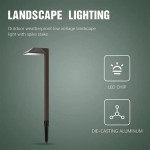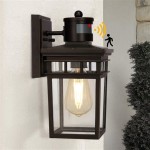Outdoor Lighting for Portrait Photography
Outdoor lighting presents unique opportunities and challenges for portrait photographers. Natural light is often the preferred source for portraits due to its flattering and dynamic qualities. Understanding how to harness the power of natural light, as well as how to supplement it with artificial light sources, is essential for creating captivating outdoor portraits. This article explores key aspects of outdoor lighting for portrait photography, providing a comprehensive guide for photographers of all skill levels.
Harnessing Natural Light
Natural light is a versatile and often beautiful lighting source for portraits. It offers a range of qualities depending on the time of day, weather conditions, and the environment. Understanding the different types of natural light and their characteristics is crucial for achieving desired results.
Golden Hour: The hour after sunrise and the hour before sunset are often referred to as the "golden hours" for portrait photography. During these times, the sunlight casts a warm, soft, and directional light, creating a flattering glow on subjects. The long shadows produced during this time add depth and dimension to the portrait.
Blue Hour: The blue hour, also known as twilight, occurs after sunset and before sunrise when the sky takes on a deep blue hue. This time of day offers a cooler, more dramatic light that can be used to create ethereal or moody portraits. The low light conditions can also be used to create interesting silhouettes.
Overcast Light: Overcast skies provide a diffused, soft light that is particularly flattering for portraits, especially those with harsh features or lines. It eliminates harsh shadows and creates a balanced, even illumination on the subject's face. This type of light is ideal for shooting portraits during midday when the sun is high in the sky.
Direct Sunlight: While direct sunlight can be harsh and create strong shadows, it can also be used effectively in portrait photography. It can add drama and create a sense of depth and texture in the subject's features. However, it's important to manage the light by using reflectors or diffusers to soften the harshness and balance the shadows.
Utilizing Artificial Light
Artificial light sources can supplement or replace natural light in outdoor settings. They offer flexibility and control, allowing photographers to shape the light and create specific effects. Some common artificial light sources used in outdoor portrait photography include:
Flash: Flash units provide a powerful and controllable light source. They can be used to freeze motion, fill in shadows, or create dramatic highlights. Different flash techniques, such as bounce flash and off-camera flash, can be employed to achieve various lighting effects.
Continuous Light: Continuous light sources, such as LED lights, offer a constant stream of light that can be easily adjusted. They are ideal for creating natural-looking lighting and for seeing the effects of the light in real-time. Continuous lighting can also be used for video recording and live streaming.
Reflectors and Diffusers: Reflectors and diffusers are essential tools for manipulating natural light. Reflectors bounce light back onto the subject, softening shadows and adding brightness. Diffusers soften the light from direct sunlight, creating a more even and flattering illumination.
Composition and Framing
Outdoor portrait photography involves careful consideration of composition and framing. The environment becomes an integral part of the portrait, and it's important to utilize the surroundings to create a harmonious and visually appealing image. Some elements to consider include:
Background: Choose a background that complements the subject and the overall mood of the portrait. Consider using natural elements like trees, flowers, or water, or incorporate urban elements such as buildings or street scenes. Ensure the background is not distracting and that it doesn't merge with the subject.
Leading Lines: Use leading lines, such as paths, fences, or branches, to guide the viewer's eye towards the subject. Leading lines can create depth and a sense of movement in the portrait.
Rule of Thirds: Position the subject off-center, following the rule of thirds, for a more balanced and dynamic composition. This creates visual interest and avoids placing the subject in the center of the frame.
Perspective: Experiment with different angles and perspectives to create unique and engaging portraits. Try shooting from above, below, or from a distance to create different visual effects.

Pin By David Casimer On Photography Ideas Lighting Setup Portrait Studio

Lighting Set Ups Portrait Photography Essentials Outdoor

11 Outdoor Portrait Photography Tips For Easy Shots

Portrait Photography Work Neeta Shankar Private Limited Candid Wedding And Lifestyle Photographer
Indoor Outdoor Lighting Setups Simple Diagrams For Learning Photography

Applying The 3 Light Studio Setup To Outdoor Portraits

The Best Lighting For Outdoor Photography Focus

Applying The 3 Light Studio Setup To Outdoor Portraits

Allison Shelby Lighting Work Setup Dramatic Photography Photo Light

Using Lights For Outdoor Night Time Portrait Photography
Related Posts







